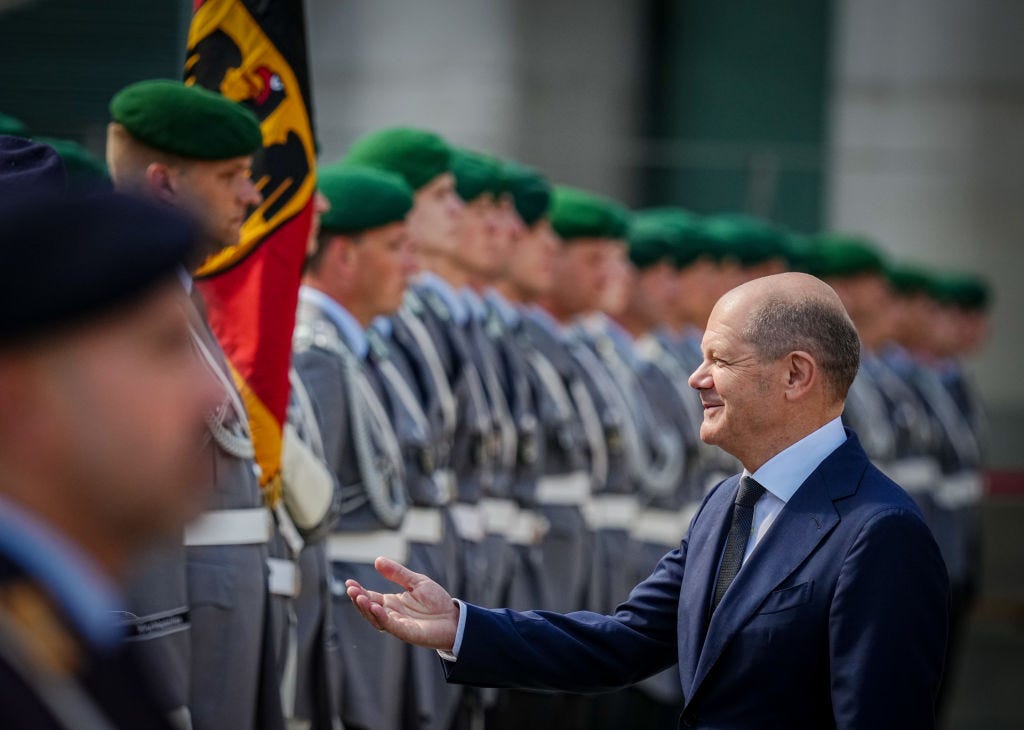The good, the bad, and the ugly of Zeitenwende
Ukrainian President Volodmir Zelensky is known to be a master communicator. His New Year’s speech moved many to tears. That same day, Zelensky took to Twitter to address the German chancellor. “Thank you for the Zeitenwende, Herr @Bundeskanzler” he tweeted in German “may we complete it in 2023 with a common victory”. That’s some clever messaging, sweet-talking Olaf Scholz while reminding him that the work isn’t done yet.
The Zeitenwende (‘turn of the time’ or ‘turning point’) is a term that even those with only a passing interest in Germany have probably come across by now. It is shorthand for the policy changes that Germany has vowed to undertake following the Russian invasion of Ukraine. The German military has famously had problems for years. Aircraft that don’t fly, submarines that don’t dive, acquisition delays and cost overruns, to name just a few. The ministry of defence is generally considered an undesirable post, and during the 2021 coalition negotiations none of the three parties appeared particularly keen on claiming it for themselves. The Zeitenwende, one might hope, will change all this. This being said, defining the Zeitenwende as a change in policy is a slightly charitable reading: it’s a term which Olaf Scholz used in a speech at the German Parliament three days after the Russian invasion. But the chancellor did not so much call for a Zeitenwende, but rather noted that one was happening. A more passive approach than some commentators made it out to be.
Still, Olaf Scholz announced a series of policies, and policy changes in the areas of energy, international relations, and, most importantly, defence. The latter included weapons deliveries to Ukraine, a €100 bn fund to turn the Bundeswehr into “capable, highly modern, advanced armed forces”, over 2% of GDP spent on German defence, new armed drones and aircraft, and more.
11 months have passed. The war in Ukraine still rages on. So how much have the times turned in Germany? What is the good, the bad, and the ugly of Zeitenwende?
The Good
Support for Ukraine
All the criticism of German deliveries of military equipment notwithstanding (see ‘the bad’ below) the German government’s support to Ukraine has been substantial. Germany, as of January 2023, has delivered an array of military equipment, including systems such as the MARS II multiple rocket launchers, the ‘Panzerhaubitze 2000’ howitzer, the aerial defence system Iris-T SLM, and the ‘Gepard’ anti-aircraft tank, all of which have made a real difference on the battlefield. Germany stands in fourth place in the league table of Ukraine supporters (behind the US, the EU institutions, and the UK) and Ukraine was the number one recipient of German military exports in 2022. This is not just old material; while the Gepard was brought out of retirement, Iris-T is so new it is not even yet in use with the Bundeswehr. Just a few days ago, the German government agreed to deliver Marder tanks, and the discussion on the Leopard 2 combat tanks is ongoing. These deliveries are substantial, important – and they break with a long-standing German rule of not delivering weapons into active conflict zones.
Keep reading with a 7-day free trial
Subscribe to Comment is Freed to keep reading this post and get 7 days of free access to the full post archives.



